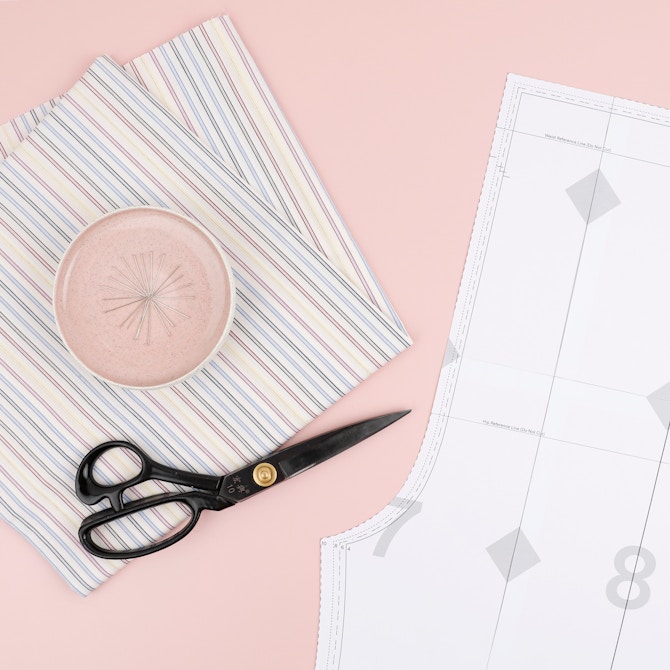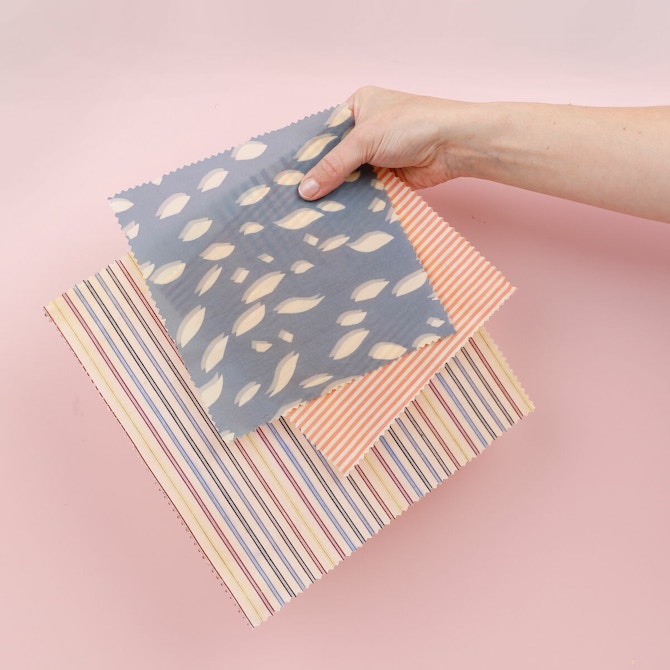Sustainability

An Introduction to Slow Sewing
13—December 2022
Slow sewing newbie? We're here for you! Join us for the first post in our Sustainable Sewing series — an introduction to sewing slowly. Sounds simple, right?!
December is here! If, like us, you’re finding yourself drawn to diving headfirst into project planning for the new year, consider this week’s blog post a gentle reminder to take a breath and start *slow*.
We like to think of slow sewing as slow fashion’s creative sibling! Same family of intent, slightly different processes behind it all. If you're not familiar with the slow fashion movement, it began as a response to the pervasive impacts of fast fashion, as both an awareness of and an approach to, fashion. One that considers its impacts on workers, communities, and ecosystems. The term ‘slow fashion’ was first used by writer and researcher Kate Fletcher in an article for The Ecologist, back in 2007. Kate described slow fashion as being about “designing, producing, consuming, and living better”, with a defining focus on slowing both overproduction and overconsumption in fashion.
The slow fashion and slow sewing movements share similar roots! This week we’re taking an introductory look at some key aspects of slow sewing, and offer some top tips for weaving them into your forthcoming projects! Set all thoughts of perfection aside, slow sewing is more about taking things at a pace that allows you to link your passion with a sense of awareness and responsibility.


Recently on Instagram we pitched a simple question to our sewist community: Why do you sew?
As you can imagine, a wide range of answers came flooding in. The need for custom-fitting clothing, the ability to choose unique fabrics, the opportunity to provide for family and friends, for the joy of the craft, for charity, as a form of mediation, for creative expression, to extend family traditions, to save money, to make a little extra money, to develop new skills. A passionate sense of purpose threaded its way through your answers, and this is an integral aspect of slow sewing! Begin with intent.
Before you begin your project, consider the purpose. What exactly is it that you are making, how will you go about making it, where will you source your components, who are you making for, and most importantly, why have you decided to make something. Thinking about the purpose of your future makes helps to shift your mindset from quantity towards quality, as it allows time to carefully evaluate all those little project decisions. A fun (and we hear quite popular!) way to stay yourself accountable and intentional, is to consider keeping a project journal. This lets you keep track of supplies and components you've used, any project tips or tricks you learnt, fitting adjustments you've made for various projects and sew much more. Journaling is a great way to fine tune your thoughts and preferences about fit, style, colours and fabrics across multiple projects. Sophie from Below the Kowhai shares her approach to journaling over on her website, check it out here!
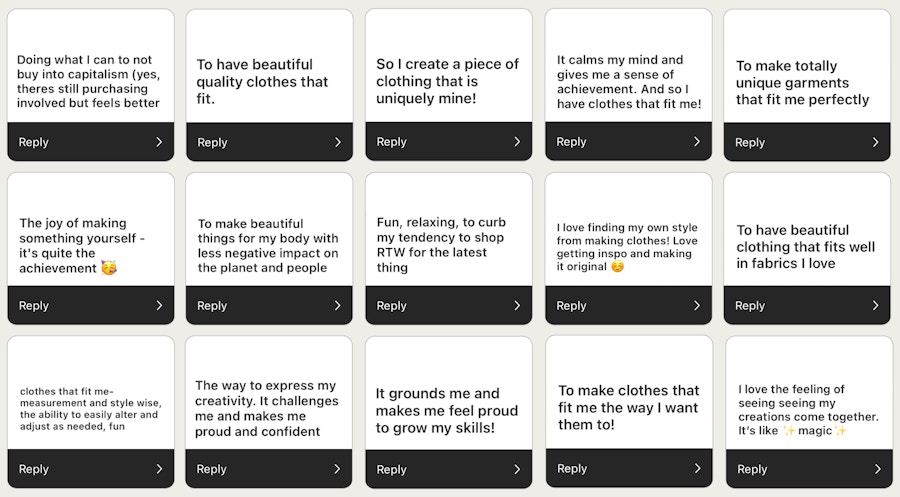
Most sewing projects will require you to make some purchasing choices (cue the treasure hunt!). Thinking carefully about where your fabrics, supplies and tools come from, and how they are made, is a crucial step in the slow sewing journey. A cornerstone of the movement asks you to embed as many ethical and environmentally conscious decisions into your project as possible. One way to do this is to prioritise fabrics that have been manufactured in ways that respect the environment and the people who made them, by using low-waste processes, avoiding harmful chemicals and adhering to fair labour laws. A little research goes a long way here! Opt for fabrics in natural fibres that are circular by nature, or deadstock fabrics that have been kept out of landfill or incineration, upcycled textiles with a new lease on life, or better yet, aim to #MakeYourStash. We'll be unpacking sustainable fabric selection and textile certifications further in future blog posts. Trust us when we say that there’s SEW much joy to be had in the hunt for the right fabrics!
Often overlooked are those smaller components our #MeMade garments contain. From the elastic in your waistband, to the recycled paper button in your shirt cuff, or that interfacing in your coat collar. Taking time for learning and sourcing the best components you can find, within your budget and to suit your project, is no small task! Even the most seasoned of sewists assure you, they’re still on the learning journey towards conscious consumption. Awareness of where all of your smaller components come from and how they are made will make a big difference to the ethical impacts of your slow sewing practice in the long term. Pair this with careful fabric choices and you’ll also be creating a wardrobe of high-quality garments, that will last longer, be easier to repair, and get more wear. It’s a win-win!

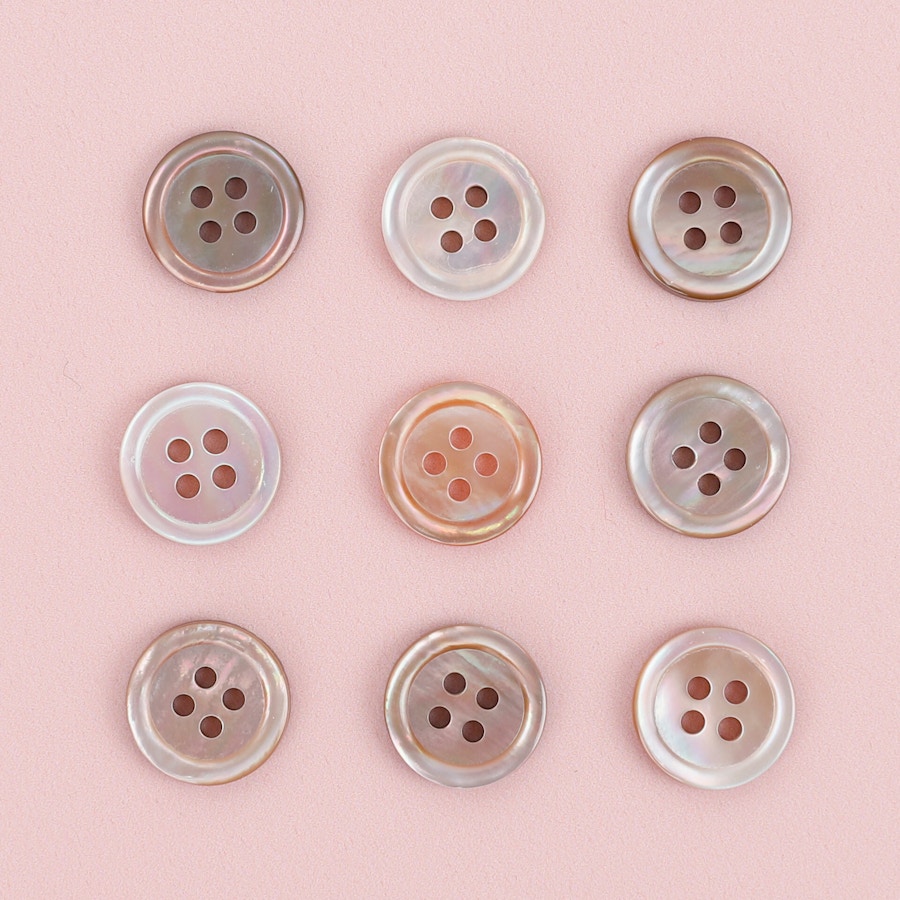
Time spent revising and honing sewing skills is time very well spent. Take advantage of the sew alongs and video guides shared by patternmakers (we have one for every Make by TFS pattern) and head on over to Instagram or Facebook where many a sewist, from all walks of life, are ready and willing to lend a top tip or three!
For a variety of reasons, many home sewing patterns are generally drafted to fit a rather standard-shaped figure. We all know that no two bodies are the same - so sewing a toile before you cut into your precious fabric gives you the opportunity to check the fit, and adjust the pattern for your body if need be. It's no secret that we are massive toile fans! A toile, or muslin, is a draft version of the garment you are making, sewn up in a plain, low-cost fabric (such as calico) before you cut into any good fabric. Toiles are typically sewn together following your sewing pattern, but without any finishing closures or overlocking stitches. Not only does this quick-sew method save time, but it also lets you try the toile on and pin or draw directly onto the fabric where you want to make adjustments. Toile-making will add extra time to your overall project, but we consider this integral. A garment that fits you well is one that you are likely to get the most wear from, thus prolonging its life in your wardrobe (and making you feel fantastic when you wear it)!If you’re looking for toiling advice, or have never seen this process in action before, there are a few gems online. We love this guide by Emily from In The Folds for toiling her Acton Dress pattern. Our friends over at Seamwork Magazine are fans of the toile too, with their piece on getting the most from your toile available here.
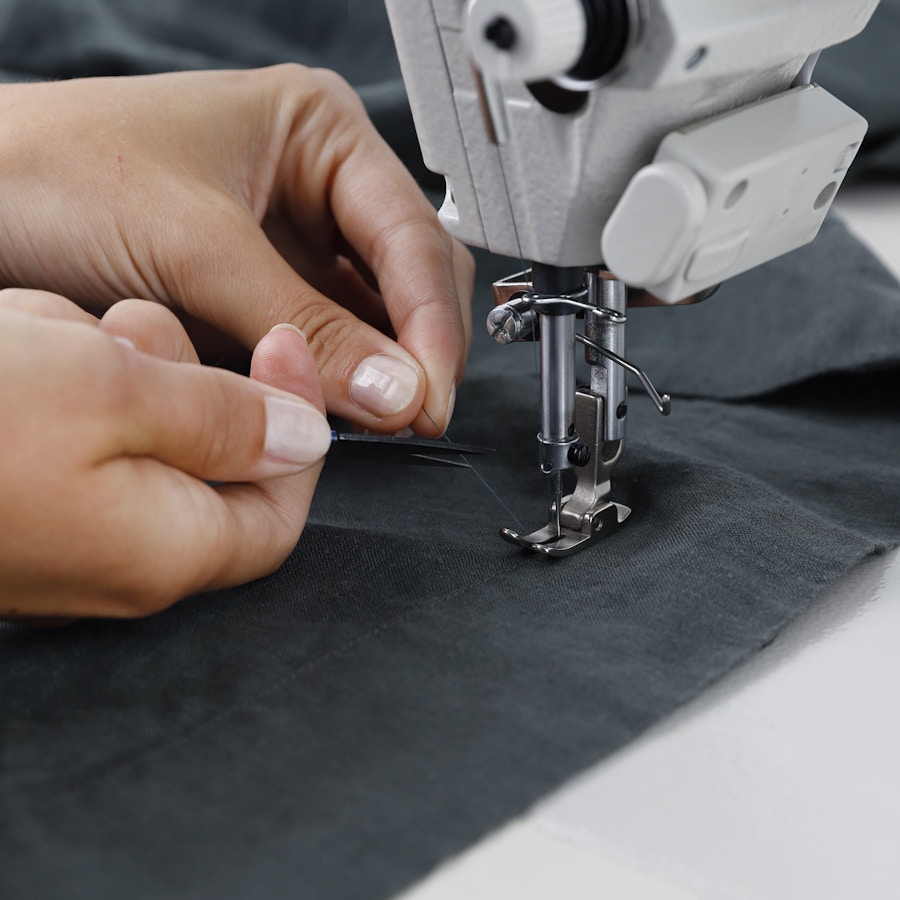

Thinking about lifelong wear can be a challenging concept, but the core idea needn’t be reliant on plain cuts and boring colours! Prolonging the life of a garment can be as simple as sewing a little extra seam allowance into your makes to allow for fluctuations in your body over time. A few cm added to the seat seam of those beloved Cass Pants can mean the difference between sending them to the thrift store or making a quick adjustment and keeping them in your wardrobe for seasons to come. Similarly, learning a few basic mending techniques can help extend the life of your #MeMade pieces too. Strap fixes, buttons loose and hems awry are all covered off in ReMake's lockdown-era mending tips post, which you can find here.
Any slow sewist worth their threads knows that learning how to carefully clean and store those precious makes is just as important as the sewing process itself! Understanding what the laundry needs of garment and fibre types are helps to elongate the life of your clothes, but to also save on some major energy usage. A typical wash cycle uses upwards of 80 litres of water, and a dryer takes about five times as much energy as the wash! Washing as little as you can, using a mesh garment bag, and air drying your laundry helps your clothes last longer. A microfibre catcher or filter used in your machine will also help to reduce the number of microfibres that get washed into your local waterways.

We hope this introduction has inspired you to start slow sewing! Remember, embracing slow sewing is both a journey and a mindset shift. Earth.org sums this up nicely, as a movement towards "a lifestyle that acknowledges the real value of clothing and the entire process involved – from materials, the planet, and the people". We're here for it! Join us over on Instagram and TikTok and share your #SlowSewing progress.

